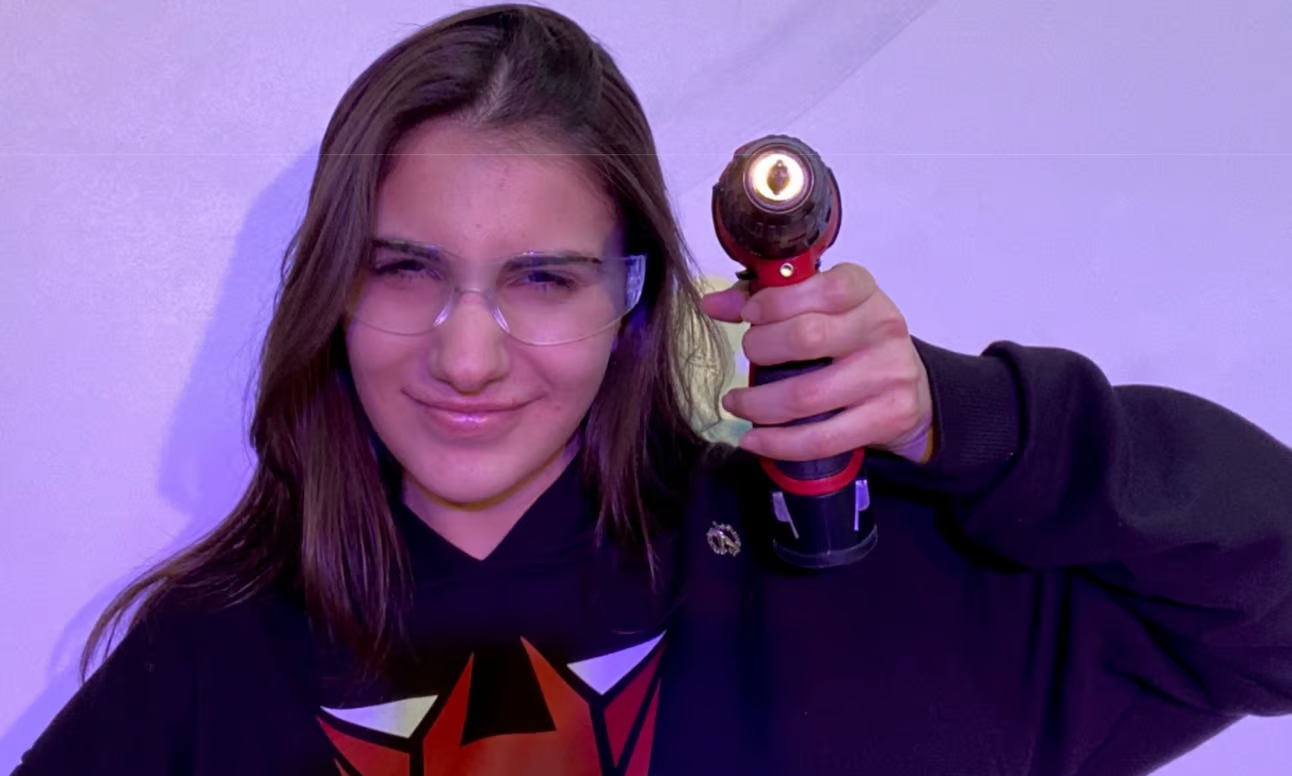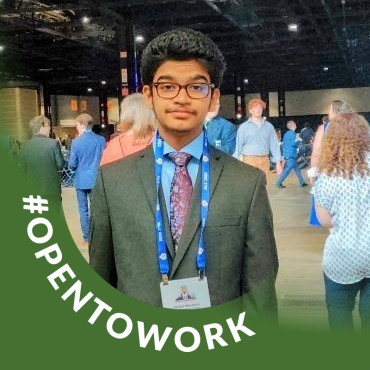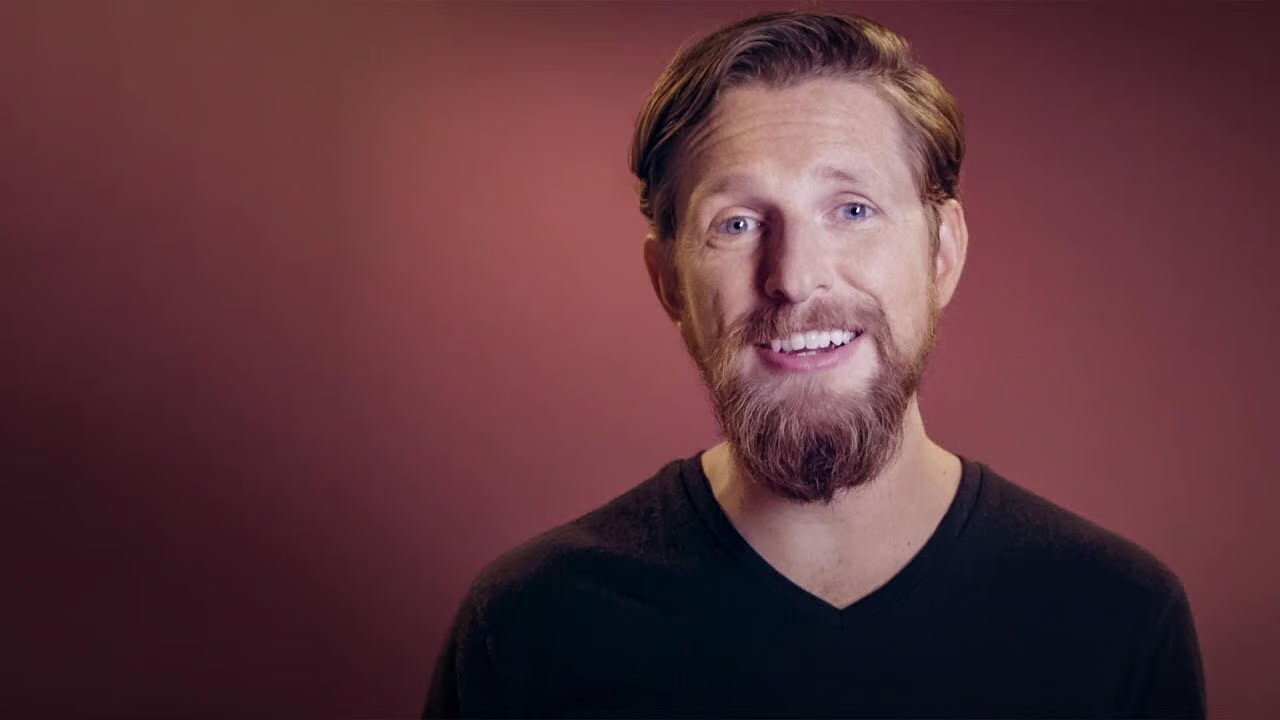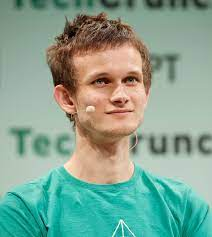How do you help your kid stand out in a sea of applications for competitive internships, jobs, and colleges? And what if there was a way to help your kid put something incredible on their resume, while also picking up valuable life skills? Turns out, starting a business can do all of these things for your kids — and more.
And sure, your teen might not build the next billion-dollar unicorn startup. But studies show that serial entrepreneurs, or people who began building businesses at a young age, set themselves up for success later on — no matter how successful their early ventures were.
That means, when it comes to business, the earlier you start, the better — and to prove it, we compiled a list of some of our favorite successful teen entrepreneurs.
If you didn’t think kids could hack it in the business world, think again: 👇
1. Rhett Jones

BETA Camp alum Rhett Jones founded Station Mountain Bike Park — a park offering 20 adventure trails, bike rentals, a bike shop, lodging, and food — when he was only 17 years old.
Rhett recently secured $3m in funding for the land, and $350k in investment for the park development from 19 equity investors.
How he did it:
Rhett had the passion and the vision — he needed a network and support. He needed an environment to thrive and grow in. Somewhere to ditch his limiting beliefs.
Enter: BETA Camp.
Rhett honed his skills, endurance, and work ethic into a fine-tuned tool he could use to get through to private investors and make his dream a reality.
Once his funding was secured, he hired a team of 10 full-time staff to launch his vision into reality. He had 350 people christen the trails in the first three days.
👉“BETA Camp gave me an entrepreneurial perspective and confidence and taught me the essentials of starting a business,” says Rhett.
2. Gulbin Alti

BETA Camp alum Gulbin Alti is the founder of Copipest — a device that can integrate into drip irrigation systems and regulate pesticide dosage automatically — and she’s just getting started.
She even won the Rise for the World award and a full-ride scholarship to any university of her choice.
Gulbin overcame immense odds to make her dreams a reality.
How she did it:
Watching her father and two of her brothers — all engineers in the construction business — inspired her to pursue building mechanical solutions to the world’s problems.
To win the Rise for the World award, she needed to: find a problem to solve, build the solution, and upload five videos and two essays about her project.
She found her problem in her own backyard in the form of an unproductive patch of land that had been over-saturated with pesticides. And so, Copipest was born.
Gulbin won a full-ride scholarship to any university of her choice, despite terrible odds: her grandmother passed away and she was forced to redo her work 3 days before the deadline due to a broken computer.
👉“I asked myself, ‘Do I need to give up right now, or do I need to continue to work?’” Gulbin says.
She chose to work — and it paid off.
3. Shakeel Majeed, Navin Narayanan, Trinayaan Hariharan, and Venkat Mandava




Shakeel, Navin, Trinayaan, and Venkat built PayBridge, the peer-to-peer payment software disrupting a ~$3 trillion market by sharing space with Venmo, CashApp, and PayPal — while they were all only teens.
PayBridge allows users to “bridge” between different payment apps, removing the pain point of incompatible apps.
How they did it:
They found a problem, validated the problem through surveys, assembled a team, and built a prototype to test the product.
Navin identified his strengths and weaknesses and worked to fill those gaps by recruiting fellow students who had complementary skill sets.
Together, they refined the website and continued to gather feedback, all while taking AP classes, doing sports and activities, and getting excellent grades.
👉“I don’t think it has negatively impacted our studies,” says Shakeel. “I think [building a business] improved them.”
4. Matt Mullenweg

Matt founded WordPress — a web content management system that powers 43% of all websites, with a combined economy of $600B — when he was only 19.
Today, Matt is the CEO of Automattic, WordPress’s “parent company” which is valued at over $7B. 💸
How he did it:
“Parent company” is in quotes above because no company technically owns WordPress — it’s open-source software.
That decision ties into Matt’s value system and his emphasis on sticking to his morals. Keeping WordPress open-source also aligns with maintaining the four key freedoms in software.
To achieve those standards, Matt and his co-founder Mike Little took the code from a blogging software that Matt was using and turned it into WordPress through an open-source method called “forking.”
The biggest players in tech all produced blogging software, so Matt was concerned about how his scrappy little WordPress program would take off in an oversaturated market. But he persisted, believing in his mission and pushing forward even when the odds seemed against him.
He cites making mistakes and learning from them as an unavoidable stage of growth in his entrepreneurship journey.
And for aspiring entrepreneurs, Matt offers this advice:
👉 “Make reversible decisions quickly and irreversible decisions very deliberately.”
5. Melanie Perkins

Melanie started building what would become Canva — a graphic design tool valued at $25B — at just 19 years old.
Canva did not have an easy entrance to the design world. Melanie had Adobe and Microsoft to compete with, alongside hesitancy in investors.
How she did it:
Melanie and Canva’s “overnight success” actually took 9 years — 9 years of rejection, failure, and over 100 pitch revisions.
Nevertheless, she persisted. Her vision for what Canva could become was too strong to leave behind, no matter how many naysayers tried to discourage her.
Canva was not Melanie’s first business. In fact, it wasn’t even her second. She started her first venture at 14 — designing and selling handmade scarves — the second was the precursor to Canva, called Fusion Books.
All of her experience building and failing forward led to her success with Canva.
👉“If it wasn’t challenging, you wouldn’t feel as satisfied when you get to the end goal,” says Melanie.
6. Dylan Field

Dylan founded Figma — a collaborative interface design tool recently acquired by Adobe for $20B — while only 19.
He dove full-force into making Figma a reality after dropping out of college and getting into the Thiel Fellowship, a $100,000 grant awarded to young entrepreneurs by investor Peter Thiel.
The road to success was not easy. Dylan faced multiple roadblocks — not the least of which was his lack of leadership experience. He would have to grow if he wanted his company off the ground.
How he did it:
Dylan’s original goal for Figma was to create free, simple, creative tools anyone could access right from their browser, without the hassle of apps and compatibility.
Dylan had high expectations going into Figma’s beta product and failed to create a balanced team environment — resulting in multiple early-stage employees quitting before the product even launched.
To get over the hurdle of inconsistent product goals, company churn, and more, Dylan would have to get clear on the product he was building and step up as a leader.
And that’s what he did.
By 2021, the company sat at $10B in value. Forbes reported that the company had $75m in revenue in 2020 and Joe Biden's presidential campaign managed all of its visual assets in Figma.
7. Vitalik Buterin

Vitalik founded Ethereum — a community-run technology powering the cryptocurrency ether (ETH) and thousands of decentralized applications, raising more than $18 million in its first crowdfunding — while only 19 as a participant in the Thiel Fellowship.
Ethereum was the culmination of a lifetime of passion for computer science and code.
In 2022, Ethereum transitioned its consensus mechanism from proof-of-work (PoW) to proof-of-stake (PoS) in an upgrade process known as "the Merge,” cutting Ethereum's energy usage by 99%.
How he did it:
Vitalik argued that Bitcoin needed a scripting language for application development. He proposed the development of a new platform with a more general scripting language.
He believed blockchain technology could benefit from other applications besides finances, and it needed a more robust language — so he built one.
Despite deals falling through, challenges ensuring software security, and more, Vitalik pressed onward and continues to improve Ethereum through constant study and feedback.
What kinds of businesses can teens start?
🍋 Selling lemonade on the curb every summer isn’t the only option for your kid — we have proof!
From designing STEM-based craft boxes for kids to offering affordable web design for small businesses, the possibilities are only as endless as your kid’s imagination and willingness to learn.
Our students have launched all sorts of solutions, such as:
- A business that offers personalized university guidance to high school students
- A website for online art galleries that connects artists and enthusiasts
- A company that uses the power of AI to help influencers grow their audiences
… and this is just scratching the surface.
Want your teen to be an entrepreneur, too? Here’s how.
At Prequel, even teens with no business experience can learn the ins and outs and launch their first startup in just a few months.
Prequel students continue to test the limits and deliver outstanding projects that solve real problems and impact real people.
Founded by industry professionals and entrepreneurs, Prequel equips your kid with the mindsets and skills that help them flourish in whatever field they choose. And, they gain a network of like-minded learners to build and grow with.
Entrepreneurship isn’t only a game for the pros — your ambitious teen can get a head start on building the future. 🛠️
.jpeg)
